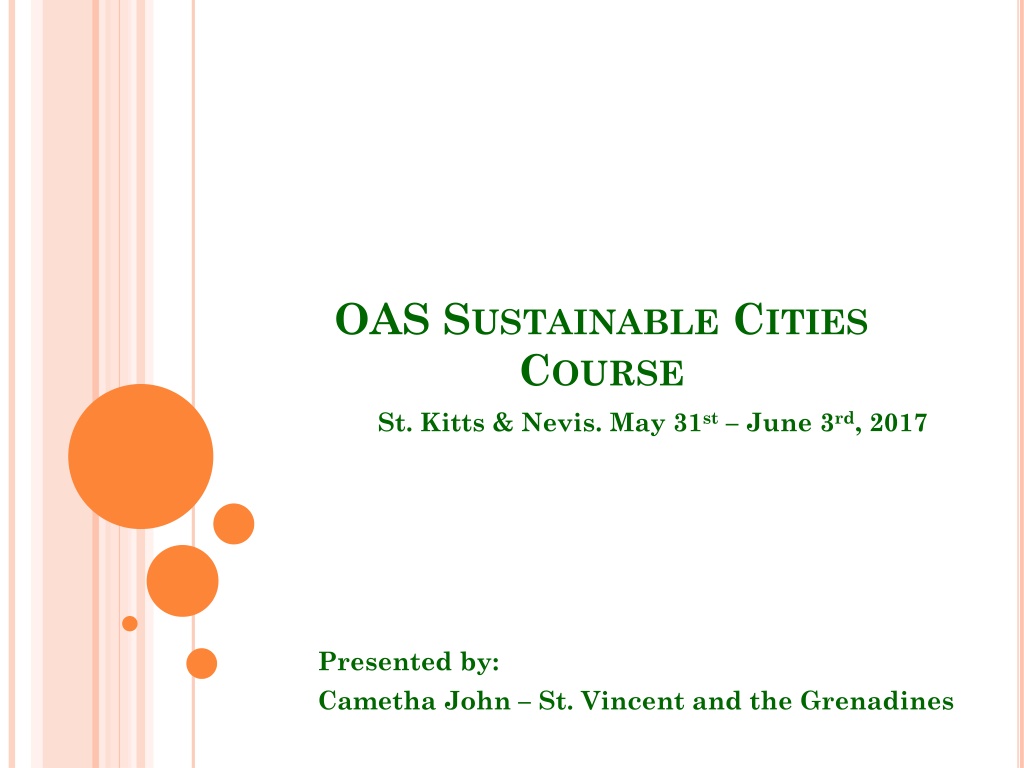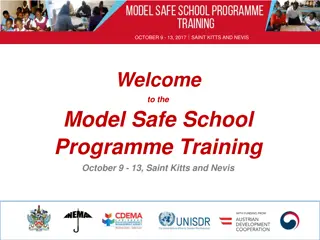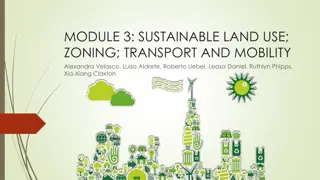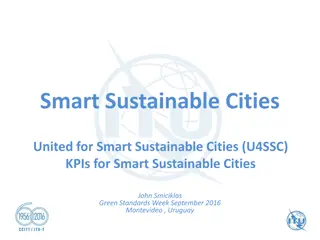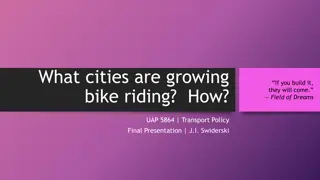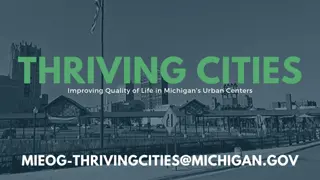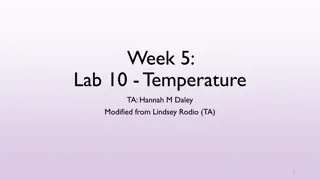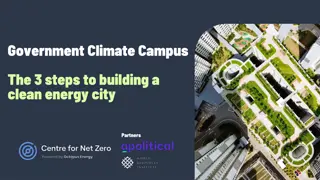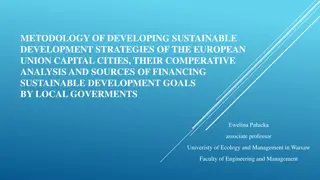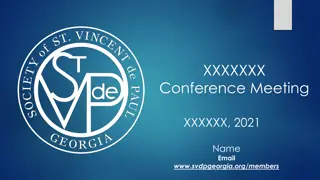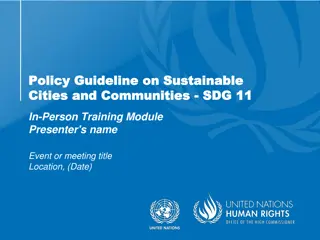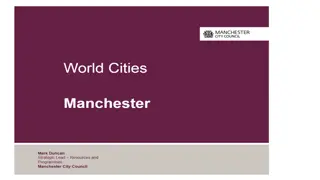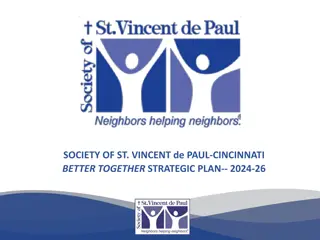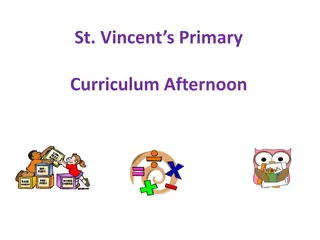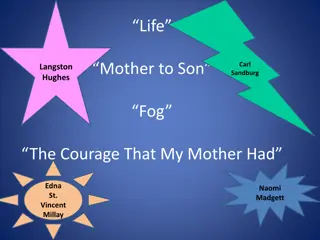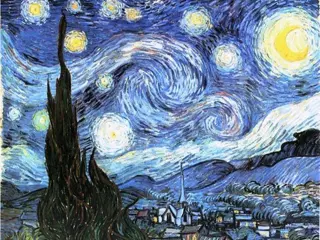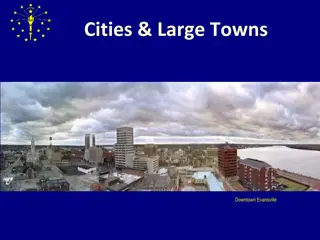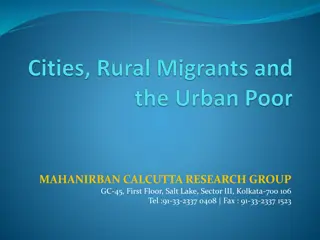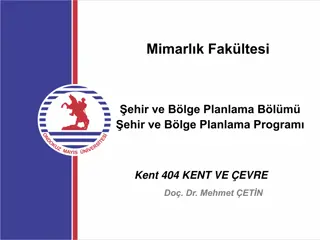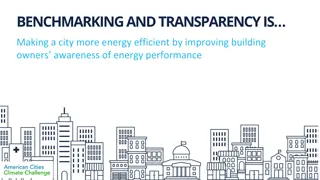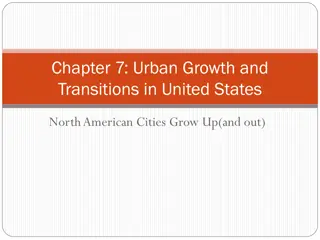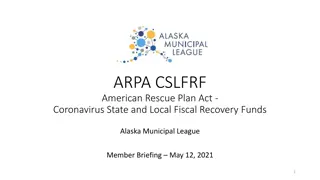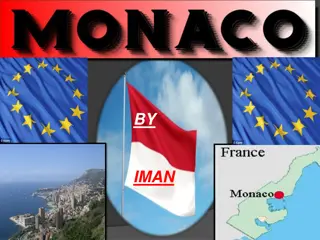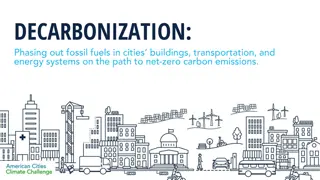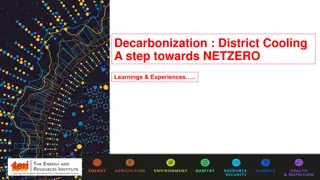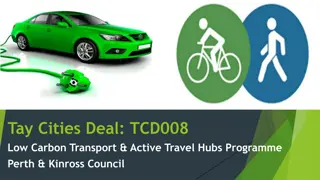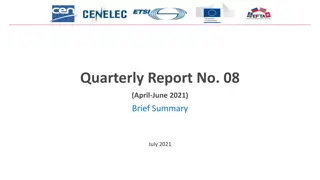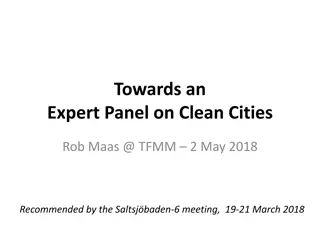Sustainable Cities Course in St. Kitts & Nevis and Initiatives in St. Vincent and the Grenadines
St. Kitts & Nevis hosted a Sustainable Cities Course in 2017 while St. Vincent and the Grenadines are implementing programs like the Bright Tus-T School Breakfast Programme and Schools Feeding Programme to support their communities. St. Vincent also boasts fresh water resources coverage and initiatives to enhance water availability in the Grenadines.
Download Presentation

Please find below an Image/Link to download the presentation.
The content on the website is provided AS IS for your information and personal use only. It may not be sold, licensed, or shared on other websites without obtaining consent from the author. Download presentation by click this link. If you encounter any issues during the download, it is possible that the publisher has removed the file from their server.
E N D
Presentation Transcript
OAS SUSTAINABLE CITIES COURSE St. Kitts & Nevis. May 31st June 3rd, 2017 Presented by: Cametha John St. Vincent and the Grenadines
ABOUT ST. VINCENTANDTHE GRENADINES (SVG) Population - Approx. 102,350 Multi-island, English speaking state (32 islands and cays) Total Area - 150 square miles/ 389 km2 Capital - Kingstown Urban Population Share - 50.6% Tropical Climate Mountainous topography Major Features - La Soufriere Volcano and Botanical Gardens Currency - Eastern Caribbean Dollars (USD1= XCD2.67)
START BRIGHT TUS-T SCHOOLBREAKFAST PROGRAMME An initiative by All Island Recyling Inc. in primary schools. Two (2) supporting pillars: Tus-T water sales and recycling of different brands of plastic beverage bottles. For the school year 2016-2017 children served daily went from 60 to 375 and 12 to 75 schools (primary and secondary combined) in all 11 school districts. In January 2017, 10 children were served breakfast in 4 schools. Presently 395 breakfasts are being served daily.
SCHOOLS FEEDING PROGRAMME Initiative by the Ministry of Education in collaboration with the Ministry of Health, Wellness and the Environment. Makes balanced, nutritious meals available to all children attending Primary Schools and Early Childhood Educational Centres. Aim: to provide one-third ( ) of the daily nutrient requirement to the beneficiaries in hopes of alleviating problems that may inadvertently affect learning. Head teacher and supervising teacher at each school are responsible for the daily operation of the programme. Approximately 110 kitchen attendants employed who are responsible for food preparation and service. Sixty-four (64) primary schools and nine (9) pre-schools on the programme. In 2015-2016 the schools population was 13,173 with total of 7,765 students benefitting from the School Feeding Programme in that year.
FRESH WATER RESOURCES The mainland St. Vincent has 100% coverage provided by the Central Water and Sewerage Authority (CWSA), which does treatment, transmission and distribution of potable water to domestic, commercial, shipping, and government customers. About 98 % of the households have pipe-borne water directly to them. The Grenadines has no surface water and relies on rainwater harvesting and a few artesian wells. A Reverse Osmosis plant was installed in Bequia. It is driven by solar energy and hoped to be reproduced in other Grenadine islands.
WASTE MANAGEMENT Every community on the mainland has collection of solid waste at least once per week for disposal at landfill. Private refuse collection companies serve many corporate entities. Chlorofluorocarbons (CFCs) have been completely phased out. An active private sector lead scrap metal recycling export programme in place. More plastic wastes being recycled locally by All Island Recycling Inc. SVGCC launched a waste management project in April 2017 -Phase 1: Comprehensive Recycling programme -Phase 2: Composting and backyard gardens on campus
NATIONAL ENERGY POLICY (NEP) This policy was established in 2009 to provide a plan for the energy sector that addresses sustainability issues. The National Energy Action Plan (NEAP) was established in 2010, which consolidated policies into actionable steps. The country identified a goal of generating 30% of all electric output from renewable energy sources by 2015 and 60% by 2020. VINLEC generates, transmits, and distributes electricity in SVG except in Palm Island and Mustique who are supplied by privately owned electricity systems. VINLEC has a generation capacity of 58.3 MegaWatts (MW), of which 5.6 MW comes from 3 hydropower plants, with the remainder made provided by diesel generators. Residential rates start at $0.26 per kilowatt-hour (kWh), below the Caribbean regional average of $0.33/kWh
GEOTHERMAL DEVELOPMENT PROJECT To deliver a 10 MW geothermal power plant to SVG Partners: Reykjavik Geothermal, Light and Power Holdings Ltd, Government of St. Vincent and the Grenadines, Clinton Climate Initiative, VINLEC Project Activities Completed: Environmental and Social Impact Assessment, Parrot Census, Resettlement Action Plan, Vesting of lands, Phase 1 Civil Contract: Site Access and Road Improvement, Grants and Agreements signed Project Activities for 2017: Phase 2 Civil Works, Power Purchase Agreement, Drilling Contract , Cost Assessment for VINLEC Transmission Lines.
The slopes of St. Vincents La Soufriere volcano, long the home of illegally grown marijuana, are being explored for geothermal potential. Credit: Kenton X. Chance/IPS The slopes of La Soufriere volcano being explored for geothermal potential.
SOLAR PHOTO VOLTAIC DEMONSTRATION AND SCALE-UP PROJECT To install a 200 kW roof mounted solar photovoltaic (PV) system on several Government buildings and to provide technical assistance to develop appropriate financial mechanisms. Partners: Energy Unit, World Bank, Ministry of Health, Wellness and the Environment, VINLEC Project Activities for 2017: 200 kw Solar PV to be installed at the Division of Technical and Vocational Education (Community College) Strengthen the government s capacity and sector knowledge through an on-the-job capacity-building experience Compensation for building owner through a rooftop lease arrangement with periodic payment and/or reduced electricity costs.
750 kilowatt hours of photovoltaic panels were installed, to reduce carbon emissions by 800 tonnes annually
ENERGYFOR SUSTAINABLE DEVELOPMENTIN CARIBBEAN BUILDING (ESD) To establish and implement measures for promoting sustainability within the buildings sector in St. Vincent and the Grenadines (SVG). Partners: Energy Unit, Ministry of Housing, Ministry of Transport and Works Project Activities 2017: Retrofit of lights in Public Library. Rewiring of Electrical System in Public Library. Installation of a 75kW Solar photovoltaic system at the Argyle International Airport. Implementation of Energy Efficiency Building Codes. Establish Energy Labeling Standards
BANON STYROFOAM Item is non-biodegradable, difficult to recycle and very common. Health related issues linked to use of the product. First phase of ban on Styrofoam products in food service industry was effective May 1st, 2017. Total outlaw effective February 1st, 2018. No importation, selling, serving or packaging of food in it.
FISHERIES CODEOF CONDUCTAND LEGISLATION The Fisheries Division uses the FAO code of conduct on responsible fishing in its work with fisher folk and civil society groups, to enable compliance with fisheries regulations aimed at making fishing sustainable while adhering to the international agreed fishing practices. As of January 1st, 2017, the catching or killing of sea turtles, or disturbing of their nests became illegal. Laws are to be passed to outlaw the killing of Orcas (Killer whales) in keeping with an international ban signed onto re the killing of Bottlenose Dolphins and Killer whales.
